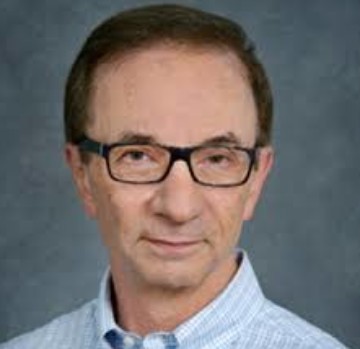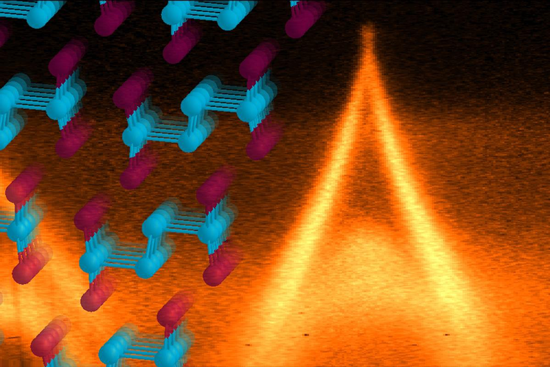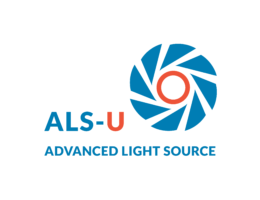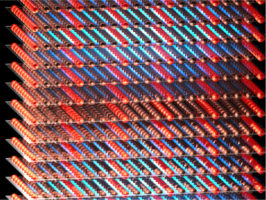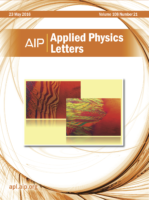Synchrotron Laue x-ray microdiffraction turns 20 this year. The June 2016 issue of MRS Bulletin is dedicated to synchrotron radiation research in materials science and features a review article on the current capabilities, latest technical developments, and emerging applications of Laue x-ray micro- and nanodiffraction co-authored by ALS beamline scientist Nobumichi Tamura. The cover image shows a Laue x-ray microdiffraction pattern from a sea urchin tooth taken on Beamline 12.3.2. Read more »
All News & Updates
Don DePaolo, Associate Laboratory Director for Energy Sciences
As Associate Laboratory Director (ALD) for Energy Sciences, Don DePaolo oversees the ALS, Chemical Sciences, and Materials Sciences. He’s also a UC Berkeley Professor of Geochemistry in the Department of Earth and Planetary Science. Though many ALS staff and users may not know him personally, DePaolo has been a key figure in the ALS/DOE relationship over the past few years. DePaolo will be retiring this year, but hopes to continue to work with the ALS in moving toward a facility upgrade. Read more »
A Novel Quasi-1D Topological Insulator
The tantalizing prospect of energy-saving, ultralow-power electronics has led to a vigorous search for optimal topological insulator materials. Now, an international team of scientists has discovered the first of a new class of topological insulators with unique properties: quasi-1D bismuth iodide. Read more »
Understanding the Key to Henipavirus Infection
The Hendra virus was the first member of the genus Henipavirus, an emergent group of viruses with a high mortality rate. Knowledge of the protein structure that mediates Hendra entry into host cells could enable the design of antigens with improved immunogenic response. Read more »
New Fuel Cell Design Powered by Graphene-Wrapped Nanoparticles
Hydrogen is the lightest and most plentiful element on Earth and could serve as a carbon-free, virtually limitless energy source. Recently, researchers working at the ALS and the Molecular Foundry developed a promising new materials recipe based on magnesium nanocrystals and graphene for a hydrogen fuel cell with improved performance in key areas. Read more »![]()
![]()
ALS-U Update: BESAC Announces Results of Facility Upgrade Prioritization
On Thursday, June 9, DOE’s Basic Energy Sciences Advisory Committee (BESAC) released the recommendations of the BES Facility Upgrade Prioritization Subcommittee. I’m pleased to announce that the subcommittee considers ALS-U “absolutely central” to contribute to world leading science and “ready to initiate construction”–the highest possible ratings. Read more »
Power-Amplified Predatory Strikes in Trap-Jaw Spiders
Using a combination of high-speed video, molecular phylogenetic analysis, and x-ray microtomography of a family of tiny trap-jaw spiders, researchers discovered that power-amplified predatory strikes evolved four times independently, once the basic trap-jaw body plan was in place. Read more »
3D Charge Order Found in Superconductor
Resonant soft x-ray diffraction studies of a cuprate high-temperature superconductor revealed a 3D, long-range charge order—the first of its kind ever reported in a cuprate—that competes with superconductivity. A better understanding of such phenomena could help in the design of more robust superconductors with higher transition temperatures. Read more »![]()
![]()
In-situ Characterization of Highly Reversible Phase Transformation by Synchrotron X-ray Laue Microdiffraction
In situ measurement of the orientation matrices for the austenite and martensite phases of the alloy Cu25Au30Zn45 across the interface was performed by synchrotron x-ray Laue microdiffraction at the ALS. Together with theoretical calculations, researchers verified directly and quantitatively the factors that contribute to the alloy’s elastically compatible interface, which ultimately leads to the ultralow fatigue property of phase transformation in martensitic materials. The approach can be generalized to characterize the evolution of microstructure when the transport properties are sensitive to the structural compatibility at the heterogenous phase boundaries. Read more »
An Atomic-Level Understanding of Copper-Based Catalysts
Copper-based catalysts are widely used in chemical industries to convert water and carbon monoxide to hydrogen, carbon dioxide, and methanol. There are theoretical models used to explain this reaction, but a complete understanding of the process has been lacking. However, recent research at the ALS has shed light on the process, giving scientists key data about how copper-based catalysts function at the atomic level. Read more »![]()
![]()
- « Previous Page
- 1
- …
- 118
- 119
- 120
- 121
- 122
- …
- 139
- Next Page »

